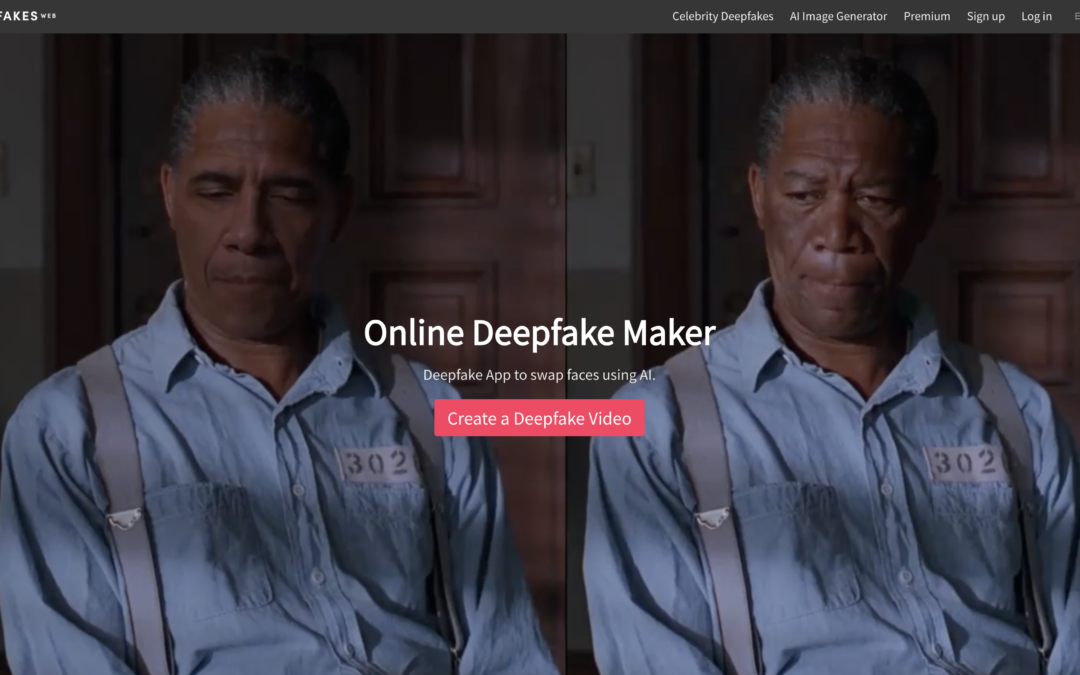The Looming Threat of Deepfakes: Can Democracy Withstand the Weaponization of AI-Generated Misinformation?
In the ever-evolving landscape of global politics, 2024 stands out as a year of high-stakes elections, with crucial races unfolding in over 50 countries, from the geopolitical flashpoints of Russia and Taiwan to the vibrant democracies of India and El Salvador. However, these elections are not merely contested by traditional political forces; they are being increasingly infiltrated by a pernicious new weapon: AI-generated disinformation, specifically deepfakes.
Deepfakes, a portmanteau of “deep learning” and “fakes,” are synthetic media that leverage artificial intelligence to manipulate audio and video recordings, creating highly realistic and often undetectable fabrications. This emerging technology poses a significant threat to the integrity of democratic processes, as it enables the creation and dissemination of misleading content capable of swaying public opinion and undermining trust in institutions.
A recent study by the Center for Countering Digital Hate (CCDH), a UK-based non-profit dedicated to combating online hate speech and extremism, paints a concerning picture. The study reveals a staggering 130% monthly increase in the volume of AI-generated election-related deepfakes on X (formerly Twitter) over the past year. This alarming trend is further amplified by the ease with which deepfakes can be produced. The study highlights the availability of free, readily available AI tools that, coupled with inadequate social media moderation, are creating a perfect storm for the proliferation of deepfakes.
Callum Hood, Head of Research at the CCDH, emphasizes the urgency of the situation: “There’s a very real risk that the U.S. presidential election and other major democratic exercises this year could be undermined by zero-cost, AI-generated misinformation. AI tools have been rolled out to a mass audience without proper safeguards, raising the specter of photorealistic propaganda that could manipulate public opinion on a massive scale.”
The pervasiveness of deepfakes is not a recent phenomenon. Research by the World Economic Forum and Sumsub, an identity verification platform, indicates a staggering 900% and 10x increase in deepfakes between 2019 and 2020 and 2022 and 2023, respectively. However, the past year has witnessed a surge in election-related deepfakes, driven by the accessibility of generative image tools and advancements in their capabilities, making synthetic election disinformation more convincing than ever before.
This growing threat has garnered significant public concern. A recent YouGov poll revealed that 85% of Americans expressed concern about the spread of misleading video and audio deepfakes, while a separate survey by The Associated Press-NORC Center for Public Affairs Research found that nearly 60% of adults believe AI tools will exacerbate the spread of false and misleading information during the 2024 U.S. election cycle.
To quantify the rise of election-related deepfakes on X, the CCDH study analyzed user-generated fact-checks (community notes) added to potentially misleading posts that explicitly mentioned deepfakes or used related terms. By examining a database of community notes published between February 2023 and February 2024, the researchers identified a concerning trend: most deepfakes on X were created using readily available AI image generators like Midjourney, OpenAI’s DALL-E 3, Stability AI’s DreamStudio, and Microsoft’s Image Creator.
Furthermore, the study evaluated the ease of generating election-related deepfakes using these tools. The researchers devised a list of 40 text prompts themed around the 2024 U.S. presidential election, encompassing disinformation about candidates, voting processes, and election integrity. They ran a total of 160 tests across the aforementioned AI image generators.
The results were unsettling. Nearly half (41%) of the tests produced deepfakes, despite the fact that Midjourney, Microsoft, and OpenAI have specific policies prohibiting election disinformation. Notably, Stability AI, the outlier, only prohibits “misleading” content but does not explicitly address content that could influence elections or harm election integrity.
The study also revealed that not all image generators are created equal in terms of their susceptibility to generating deepfakes for malicious purposes. Midjourney emerged as the most prolific culprit, generating election deepfakes in 65% of the test runs, significantly surpassing Image Creator (38%), DreamStudio (35%), and ChatGPT (28%). Interestingly, ChatGPT and Image Creator successfully blocked all attempts to generate deepfakes of political candidates, but both, along with the other generators, readily produced deepfakes depicting election fraud and voter intimidation, such as election workers tampering with voting machines.
While AI image generators facilitate the creation of deepfakes, social media platforms provide the breeding ground for their dissemination. The CCDH study highlights an instance where
a deepfake video depicting a presidential candidate engaging in corrupt behavior was shared over 10,000 times within hours of its initial upload on X, reaching a potential audience of millions before being flagged by fact-checkers. This rapid spread underscores the virality and potential impact of AI-generated misinformation on democratic processes.
The implications of deepfake proliferation extend beyond mere misinformation; they threaten the very fabric of democracy by eroding trust in electoral systems and institutions. In a world where authenticity is increasingly elusive, voters may find themselves unable to distinguish fact from fiction, leading to widespread cynicism and disengagement from the political process. Moreover, the use of deepfakes for political sabotage or character assassination could undermine the legitimacy of elected officials, sow discord among populations, and destabilize democratic societies.
Addressing the threat of deepfakes requires a multifaceted approach encompassing technological, regulatory, and educational interventions. On the technological front, researchers are exploring methods to detect and authenticate media content, such as blockchain-based verification systems and forensic analysis tools. However, the cat-and-mouse game between deepfake creators and detection algorithms underscores the need for ongoing innovation in this space.
Regulatory measures are also essential to hold platforms accountable for the spread of malicious deepfakes. While some social media companies have implemented policies against manipulated media, enforcement remains inconsistent, and gaps persist in addressing the unique challenges posed by AI-generated content. Policymakers must work collaboratively with industry stakeholders to develop robust frameworks that promote transparency, accountability, and user safety in the digital sphere.
Furthermore, efforts to combat deepfakes must be complemented by comprehensive media literacy initiatives aimed at equipping individuals with the critical thinking skills necessary to discern truth from falsehood online. By empowering citizens to evaluate information critically and verify its sources, society can fortify itself against the insidious influence of AI-generated disinformation.
In the face of an escalating arms race between technology and democracy, the stakes have never been higher. As the world grapples with the looming threat of deepfakes, the preservation of democratic values hinges on collective vigilance, innovation, and a steadfast commitment to truth and integrity in public discourse. Failure to confront this existential challenge risks undermining the very foundations of democracy, leaving societies vulnerable to manipulation, division, and authoritarian encroachment.

